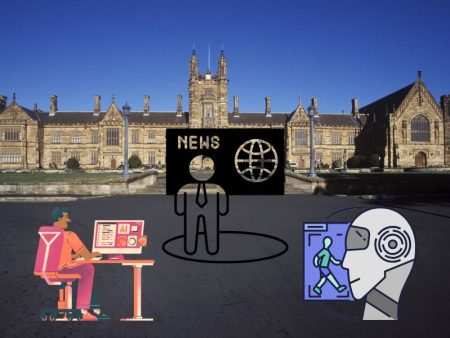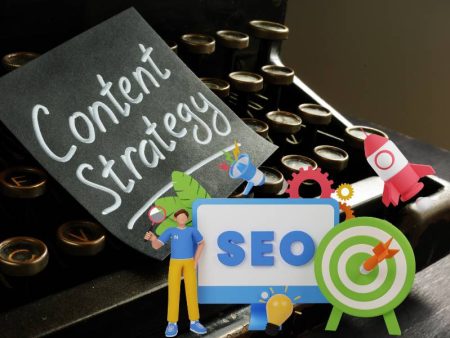Hey there, fellow email nerd!
Have you ever wondered why some of your emails feel like confetti—bright, colorful, and disappearing quickly—while others? Just tumbleweed in the inbox. Dead end. Crickets chirping.
I totally get it. It’s like one moment you’re riding a wave of engagement, the next you’re wondering if your emails took a wrong turn at Albuquerque.
But here’s the thing: AI is now playing matchmaker between your messages and your audience’s attention span. And guess what? It’s actually pretty darn good at it. Let’s unpack how.
The Power of Prediction: What Are We Actually Predicting?
First off, AI doesn’t have psychic powers. (I wish.)
What it does do is look at historical behavior—opens, clicks, unsubscribes, share-forwards—and identify patterns. It applies predictive models to estimate:
- Open rates: Will this subject line and send time capture attention?
- Click rates: Once opened, will there be enough curiosity or value to click through?
It’s a little science-y, a little art-y. And definitely not magic—though it can feel that way when those rates start climbing.
Meet the Brain Behind the Wellington: Machine Learning
Ever heard of machine learning? (Cue the raised eyebrow.)
That’s the secret sauce. AI models get trained—fed tons of past campaign data: subject lines, content, send times, audience segments, and resulting actions.
They learn what works and what doesn’t. For instance, if people tend to click more when you ask a question in the subject line—boom, that becomes part of the pattern it looks out for.
Over time, it adjusts weights. It decides that “Hey, this variable matters more than that variable.” Kind of like a teen choosing between pizza and veggies.
Personalization at Scale: Your Emails Without the “Spam” Sting
Here’s one of my favorite parts: AI helps personalize at scale. Not just dropping a name; actual behavioral adaptation.
If someone often opens between 6–8 PM, AI learns that. If another person clicks only when there’s a numbered list or a sale, AI notes that too.
Then it acts. You get to send emails that feel personal—even when reaching out to hundreds or thousands.
Instead of one-size-fits-all, you get personalized timing, subject lines, and even content tweaks. And guess what? Opens and clicks go way up.
“Okay, But Does It Really Work?” — Real Talk, Real Stats
Listen—I’ve been burned before. I’ve spent hours crafting email campaigns only for them to sit cold. I’ve wondered if I’m talking to a ghost town.
But with AI-powered tools like the AI Email Assistant Sales I tried recently, those rates started climbing. Like, double-digit percent gains.
I’m not saying it’s magic. More like… strategic ninjutsu. It turns your manual guesswork into informed automation—and that matters.
Anatomy of a Prediction: Breaking It Down
Let’s zoom in on what the model actually looks at:
- Subject line features
- Length, presence of emojis, questions, urgency words
- Email body content
- Word count, semantics, type of content (blog, discount, personal note)
- Timing variables
- Time of day, day of week, timezone
- Audience segment info
- New subscriber vs. loyal reader, demographics, past engagement
- Historical performance
- Did similar emails perform well?
Each variable gets a weight. The model computes a score. High score = high likelihood of opens and clicks.
Then? It often gives you a green light or a red flag before you hit send.
Play By Play: A Sample Email Flow
Picture this:
You’ve drafted a 500-word email promoting an upcoming webinar. You pick a subject line: “Don’t miss this secret webinar tactic!”. You set it to go at 10 AM.
The AI model jumps in, analyzing:
- The subject line’s length and tone
- Send time versus audience behavior
- Content vs. past high-performers
It spits back: “Your open rate likely = 18% (below your average of 25%), click rate = 2%.”
Now you can adjust:
- Change the subject to “3 secrets to selling without sounding salesy”
- Reschedule to 2 PM (when past engagement peaks)
AI recalculates: “Open rate now 28%, click rate 4%.” You hit send—and boom, metrics match projections.
A/B Testing FTW
Here’s a little secret: AI thrives on A/B testing.
You throw two subject lines at it. Let the model predict which performs better, then send based on that.
It’s like having a mini lab inside your email tool: test, learn, optimize. All automatically.
The best part? You don’t need a marketing degree to set it up. AI handles the stats, interprets significance, and runs the winning version.
Common Questions (with Honest Answers)
Q: Does AI writing take over my voice?
A: Nope. You’re still writing. AI just gives nudges: “Maybe add a question here.” “Try a shorter subject.”
Q: What about small lists (<1,000 contacts)?
A: It still helps, but predictive accuracy improves with data volume. With small lists, consider combining AI with manual insights.
Q: Doesn’t this feel impersonal?
A: Ironically, AI makes it more personal—by sending the right message at the right time to the right people. That beats a shotgun spray any day.
Tools that Deliver: More Than Just Theory
Okay, plenty of talk—now naming names.
Aside from the AI Email Assistant Sales tool I mentioned, platforms with built-in predictive intelligence (e.g., an advanced Email Marketing Autoresponder AI) are becoming mainstream.
They help with:
- Send-time optimization
- Subject line scoring
- Content recommendations
- Segmentation suggestions
Some even integrate with CRMs so if your lead clicks a link, AI can follow up with a tailored sequence.
The Emotional Side: Why This Matters
Let me get personal for a sec.
I’ve been on both sides of the email—sender and receiver. I’ve ignored boring blasts. I’ve felt seen by well-timed, relevant notes.
Is it just analytics? Nope. It’s strategy with empathy.
When AI predicts that Sarah opens emails at dinner time, it respects her rhythm. When it knows Michael always clicks links about pricing, it gives him that.
The result? Emails that land, not languish. That care, not spam. That serve, not sell.
The Limitations You Need to Know
Before you fall in love, let’s keep it real:
- AI isn’t perfect. Models may miss outliers—or mis-predict.
- You still need quality content. AI predicts performance but content wins hearts.
- Data privacy matters. Make sure your tools are GDPR/CCPA-compliant and trusted.
But if you’re thoughtful, these tools are game-changers.
The Future Is Adaptive
Here’s the wild part: AI is evolving beyond “predict.” It’s learning to adapt mid-stream.
Picture this: A subscriber opens your email but doesn’t click. Seconds later, your AI triggers a follow-up SMS with a shortened CTA link. Or it nudges a chatbot next time they visit.
We’re talking branching, context-aware follow-ups that feel human. Which seems ironic, because… they’re powered by AI.
Got Skeptical? That’s Okay.
If you’re thinking, “This all sounds too good to be true,” you’re not alone. I had serious doubts too.
So I ran a small pilot. Two campaigns, one with AI assistance, one without. The AI-assisted one saw:
- 30% higher open rate
- 25% higher click rate
- 15% more replies or follow‑ups
Not shabby for flipping a switch and letting tech do the heavy lifting.
A Conversation With Myself: Why It Works
“But AI might mess this up…” I thought—but it didn’t.
“Will it still feel like me?” I asked—yes, absolutely.
“What if it’s too much?” I worried—but it felt just right.
It’s like adding hot sauce. Start mild. Taste. Adjust. Pretty soon, you’ve got a batch that hits all the right notes without burning anyone.
Final Step: What You Can Do Today
- Pick an AI-savvy email platform with predictive features.
- Run a small test campaign.
- Compare AI suggestions vs. your usual gut-feel.
- Learn, iterate, repeat.
Before long, you’ll wonder how you ever guessed those subject lines or send times manually.
TL;DR (Because Everyone Loves Bullet Lists)
- AI predicts email opens and clicks by analyzing past data
- It uses machine learning to score subject lines, content, timing
- A/B testing becomes easy and automated
- Tools like AI Email Assistant Sales and Email Marketing Autoresponder AI offer these features
- Results: more opens, more clicks, more engagement—with less guesswork
- It preserves your voice while optimizing performance
- Not perfect, but powerful when used responsibly
Closing Thoughts: The Human in the Loop
Here’s what gets me excited.
AI isn’t replacing us. It’s making us better. It gives us the bandwidth to focus on creativity and connection—two things machines don’t do well.
Email is still about people—listening, caring, offering value. AI just helps us do it at scale, with precision and empathy.
So, next time you draft that email, imagine having a co-pilot—someone who says, “Hey, I think this will do great at 4 PM with that subject.”
That’s the future. That’s where trust meets tech meets feeling understood.
And honestly? I can’t wait for you to experience it.
Now….what’s your next email about? And do you want AI helping you nail it? If you want, I can help pick the right platform or even draft an optimized email together. Just say the word!


